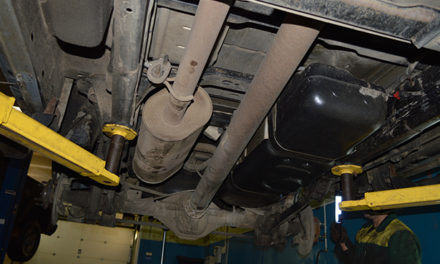When auto manufacturers started using oxygen sensors to determine how much oxygen was in the exhaust, they used only one. Now, most vehicles use at least two oxygen sensors and many uses four. In many cases, the oxygen sensors have preheaters as they do not work properly when they are cold.
Oxygen Sensors And The Fuel Delivery System
Without oxygen sensors, emissions control and electronic fuel injection would not be possible. The oxygen sensor, commonly referred to as an O2 sensor, helps to determine whether the air-to-fuel mixture is rich or lean. If the mixture is too lean, there is too much air for the amount of gas in the mixture. If it is too rich, there is too much gas for the amount of air in the mixture. Most engines require an air-to-fuel mixture of 14.5 parts air and 1 part fuel.
Location Of The Oxygen Sensor
The oxygen sensor or sensors are located in the exhaust stream and do not directly measure the air and fuel that enter the engine. However, the information forwarded to the computer is combined with other variables from other sensors. The computer is able to use this collective information to determine the air-to-fuel ratio required for the engine to run efficiently.
What The Oxygen Sensor Actually Measures
The oxygen sensor measures the amount of unburned fuel in the exhaust by measuring the difference between the amount of O2 in the air and in the exhaust gas. Because the data is processed by the computer, the computer makes adjustments to the mixture to reduce the amount of unburned fuel emitted through the exhaust. To further reduce emissions, some of the unburned fuel that is left in the system is routed via the EGR system into the cylinders.
It is this unburned fuel, released through the exhaust, which creates hydrocarbons. Oxides of nitrogen (NOx) are formed when the temperature in the combustion chamber exceeds 1,300 Kelvin. The high temperature is caused by excess air in the fuel mixture. The oxygen sensor(s) and the EGR system work with the fuel delivery system and other systems on the vehicle to reduce the amount of “waste” actually emitted through the exhaust system.
Rich And Lean Mixtures
If the air-to-fuel mixture is rich, it has excess fuel. If it is lean, it has excess air. A rich mixture causes voltage in the oxygen sensor to increase while a lean mixture causes the voltage to decrease. The computer reads these increases and decreases and uses the data to adjust the fuel mixture accordingly.
What Affects The Oxygen Sensors
When the engine is not running properly, the exhaust gas is affected, thus the data from the oxygen sensors are affected. When you scan the vehicle with a diagnostic computer, you may get a code for an oxygen sensor. This does not mean that the O2 sensor is malfunctioning. Chances are it’s fine and the mixture is off because of one or more separate problems. A spark plug that doesn’t fire properly or a bad plug wire can cause the O2 sensor to go haywire and affect the fuel economy of your vehicle.








![[Vehicle Fitment]: Compatible with Buick Allure/LaCrosse 2005-2009 V6 3.8L, Lucerne 2006-2008 V6 3.8L; Compatible with Pontiac Grand Prix 2004-2008 V6 3.8L [Reference Number]: FJ706, 800-1694N, 8001694N, 28428452, FJ10575, MP-10661, MP10661, 12576414...](https://m.media-amazon.com/images/I/415LIfa6J4L._SL100_.jpg)


